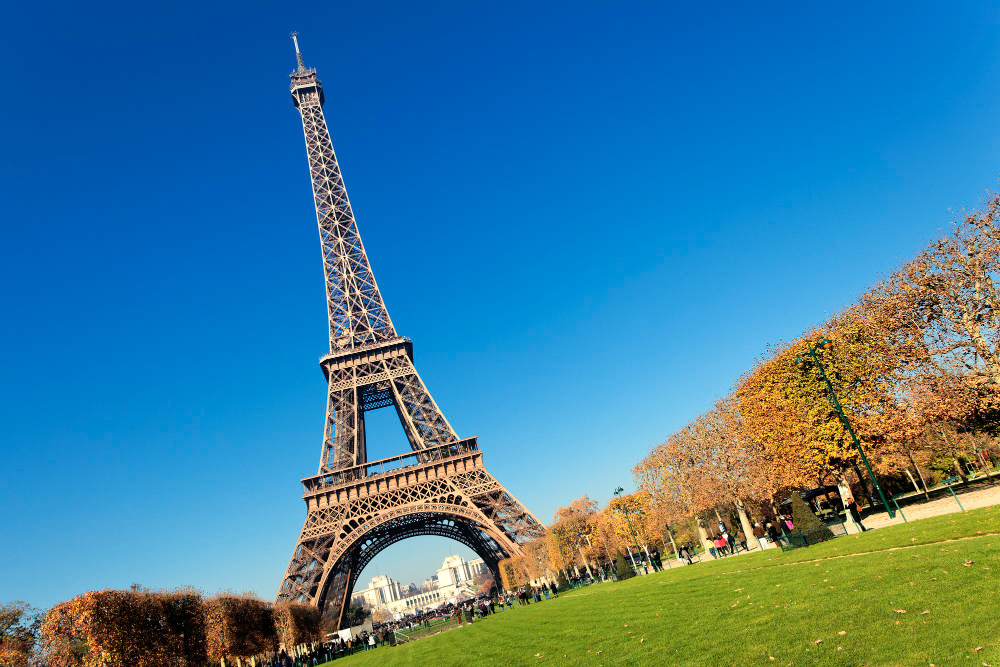Paris, the City of Love, is one of the most enchanting and romantic cities in the world. It is famous for its iconic landmarks such as the Eiffel Tower, Notre-Dame Cathedral, and the Louvre Museum. Millions of tourists flock to find Paris vacation deals every year to bask in its beauty and indulge in its rich culture and cuisine. However, there is so much more to Paris than just these famous tourist attractions. In this article, we will take you beyond the Eiffel Tower and explore the other fascinating aspects of this beautiful city. From its rich history and cultural heritage to its quirky traditions and mouth-watering cuisine, Paris has so much to offer to anyone who is willing to explore beyond the beaten path. So, whether you are planning a trip to Paris or just want to learn more about this enchanting city, keep reading to discover 10 fascinating facts about Paris that will leave you in awe.
Paris beyond the Eiffel Tower: A brief history
Paris, also known as the City of Light, has a rich and fascinating history that dates back to the Roman times. The city was founded by the Gauls, a Celtic people, who named it Lutetia Parisiorum, which means “marshy place of the Parisii tribe.” In 52 BC, the city was conquered by Julius Caesar and became a Roman city. Paris continued to prosper during the Middle Ages and became the capital of France in the 12th century.
During the French Revolution, Paris was at the center of the political and social upheaval that swept across France. The city was besieged by revolutionary forces, and the infamous Bastille prison was stormed, marking the beginning of the French Revolution. The 19th century saw Paris transform into a cultural and artistic hub, with the construction of iconic landmarks such as the Eiffel Tower and the Arc de Triomphe. Today, Paris remains one of the most vibrant and cosmopolitan cities in the world, attracting tourists from all corners of the globe.
Fact #1: Paris was once a Roman city
As mentioned earlier, Paris was founded by the Gauls and later became a Roman city. During the Roman occupation, Paris was known as Lutetia, and the city was an important center of commerce and trade. The Romans built many public baths, temples, and theaters in Paris, some of which can still be seen today. The Roman influence can also be seen in the layout of the city, with the Seine River dividing the city into two halves.
Fact #2: The oldest tree in Paris is over 400 years old
Paris is home to many parks and gardens, and one of the most fascinating things about these green spaces is the presence of some of the oldest trees in the city. The oldest tree in Paris is a 450-year-old Robinia tree, which is located in the Square René Viviani on the Left Bank. This tree is also known as the “Tree of the Philosophers” as it is said to have been a favorite spot for philosophers such as Voltaire and Rousseau.
Fact #3: Paris has more than 450 parks and gardens
Paris is often referred to as the “City of Gardens” due to its abundance of parks and green spaces. The city has over 450 parks and gardens, covering a total area of more than 3,000 hectares. Some of the most famous parks in Paris include the Luxembourg Gardens, Tuileries Garden, and Bois de Boulogne. These parks offer a peaceful escape from the hustle and bustle of the city and are popular spots for picnics, strolls, and relaxation.
Fact #4: The Louvre Museum was originally a palace
The Louvre Museum is one of the most famous museums in the world and is home to some of the most iconic artworks such as the Mona Lisa and the Venus de Milo. However, many people are unaware that the Louvre was originally a palace. The palace was built in the 12th century and was home to French kings until the 17th century. It was during the reign of Louis XIV that the palace was transformed into a museum, and the first public exhibition was held in 1793.
Fact #5: The Catacombs of Paris hold the remains of over 6 million people
The Catacombs of Paris are a network of underground tunnels and chambers that house the remains of over 6 million people. The catacombs were created in the late 18th century as a solution to the overcrowding of cemeteries in Paris. The bones were exhumed from various cemeteries around the city and transferred to the catacombs. Today, the catacombs are a popular tourist attraction and offer a unique insight into the history and culture of Paris.
Fact #6: The Parisian sewer system is a tourist attraction
The Parisian sewer system is one of the most extensive in the world and covers a distance of over 2,100 kilometers. The sewer system was built in the 19th century and is considered to be an engineering marvel. Today, visitors can take a guided tour of the sewer system and learn about the history and technology behind this remarkable infrastructure.
Fact #7: The Palace of Versailles is located just outside Paris
The Palace of Versailles is one of the most opulent and grandest palaces in the world and is located just outside Paris. The palace was built during the reign of Louis XIV and was used as the royal residence of French kings until the French Revolution. Today, the palace is a popular tourist attraction and offers visitors a glimpse into the lavish lifestyle of the French monarchy.
Fact #8: Paris has a secret vineyard
Paris is famous for its wine, but many people are unaware that the city has its own secret vineyard. The vineyard is located in the heart of Montmartre and covers an area of just over 1,500 square meters. The vineyard produces around 1,500 bottles of wine each year, which are sold at charity auctions and events.
Fact #9: The Parisian metro is one of the oldest in the world
The Parisian metro is one of the oldest in the world and was inaugurated in 1900 for the Exposition Universelle. Today, the metro network covers a distance of over 200 kilometers and has over 300 stations. The metro is a convenient and affordable way to get around the city and is a popular mode of transport for locals and tourists alike.
Fact #10: Paris has a replica of the Statue of Liberty
Many people are familiar with the Statue of Liberty in New York, but few know that Paris has its own replica of the statue. The statue is located on Île aux Cygnes, a small island in the Seine River, and was gifted to the city by the American community in Paris in 1889. The statue is just over 11 meters tall and faces west towards its larger counterpart in New York.
Conclusion
Paris is a city that never ceases to amaze and inspire. From its rich history and cultural heritage to its vibrant nightlife, Paris has something to offer to everyone. The city is a melting pot of different cultures and traditions, and its unique blend of old-world charm and modern sophistication makes it one of the most captivating cities in the world. Whether you are a first-time visitor or a seasoned traveler, Paris never fails to leave a lasting impression. So, the next time you find yourself in the City of Love, make sure to explore beyond the Eiffel Tower and discover the hidden gems that make Paris so special.




